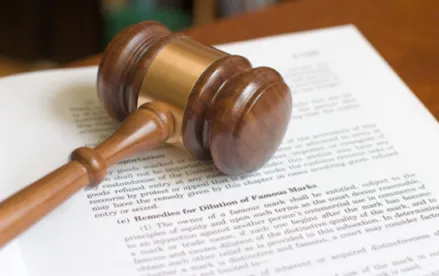Takeaway: Petitioner bears the burden of persuasion to show, by a preponderance of the evidence, that each challenged claim is unpatentable, including showing that each reference on which it relies is prior art under 35 U.S.C. § 102.
In its Final Written Decision, the Board found that claim 1 of the ‘694 patent had not been shown to be unpatentable. Claim 1 is the sole claim of the ‘694 patent, and the only claim challenged in this proceeding.
The ‘694 patent is directed to “a system and method of filtering data packets at a firewall.” Petitioner had asserted that claim 1 was unpatentable as having been obvious under 35 U.S.C. § 103 over each of Hughes and Abraham.
The Board applied the broadest reasonable interpretation (BRI) standard in conducting its claim construction analysis. The parties had disputed the meaning of “contents of the packet” as set forth in the following “wherein” clause of claim 1: “wherein the access rule is selected based upon a combination of the contents of the packet received in step a and the contents of at least one other packet.” The Board ultimately agreed with Petitioner that “the contents of the packet,” namely” should be interpreted to mean “the header and/or payload of the packet.”
Patent Owner had sought to prove a date of invention prior to the alleged effective dates of Hughes (June 18, 1996) and Abraham (March 11, 1997) in order to disqualify these references. According to Patent Owner, the invention of claim 1 of the ‘694 patent “was actually reduced to practice ‘at least as early 1996 but no later than June 11, 1996.’” In support of this argument, “Patent Owner [proffered] the testimony of inventor Mr. Partha Dutta . . . and, to corroborate Mr. Dutta’s testimony, Patent Owner [proffered] testimony of non-inventor Dr. Dalibor Vrsalovic . . . and a collection of allegedly contemporaneous documents” referred to as the “AT&T documents.”
The Board agreed with Patent Owner that “the claimed invention was reduced to practice prior to the effective filing date of Hughes and Abraham.” The Board found that the AT&T documents did not provide sufficient corroboration of Mr. Dutta’s testimony, but at the same time, was “persuaded that Dr. Vrsalovic’s testimony provides sufficient corroboration for Mr. Dutta’s testimony.” Thus, the Board concluded that “Patent Owner has met its burden of coming forward with sufficient evidence to corroborate independently inventor Mr. Dutta’s testimony that the inventors of the ’694 patent reduced to practice the claimed invention ‘at least as early as early 1996 but no later than June 11, 1996[.]’” This led the Board to conclude that “Petitioner [had failed] to demonstrate that claim 1 is unpatentable under 35 U.S.C. § 103 because Petitioner [had] not demonstrated that Hughes and Abraham are prior art.”
International Business Machines Corporation v. Intellectual Ventures II, LLC, IPR2014-00587
Paper 54: Final Written Decision
Dated: September 23, 2015
Patent: 6,826,694 B1
Before: James T. Moore, Meredith C. Petravick, and Benjamin D.M. Wood
Written by: Petravick
Related Proceedings: Numerous district court cases; Compass Bank v. Intellectual Ventures II LLC, Case IPR2014-00786 (PTAB); and International Business Machines Corp. v. Intellectual Ventures II LLC, Case IPR2014-01465 (PTAB)



 />i
/>i

